博文
[转载]hLife 2024年第一期正式出版
||
Volumn 2 Issue 1

封 面 解 读
施一
The scientists want to find the Achilles’ heel of the emerging viruses, and then develop countermeasures against the key targets. In this issue, Shi and his colleagues have solved the crystal structures of RNA-dependent RNA polymerase (RdRp) from segmented Jingmeng viruses and identified the key region of the virus genome responsible for the binding and activity of RdRp. They revealed the common and specific structural features that will provide an important basis for drug development against segmented flaviviruses. Moreover, Zhong and his colleagues have assessed the risk of Bombali virus spillover to humans and found that although wild-type BOMV does not efficiently infect human cells, the emergence of mutations in viral GP may boost its ability to spill over to humans. Wang, Gao, and their colleagues have shown that the fusion peptide inhibitor HY3000 is still working against emerging SARS-CoV-2 EG.5, EG.5.1, and BA.2.86 variants.
目 录

导 读
1.Recollection: Medical Journals in China: From Wuyi Huijiang to Chinese Medical Journal and hLife
hLife |中国医学期刊的历史演进与创新发展
通讯作者:闫群
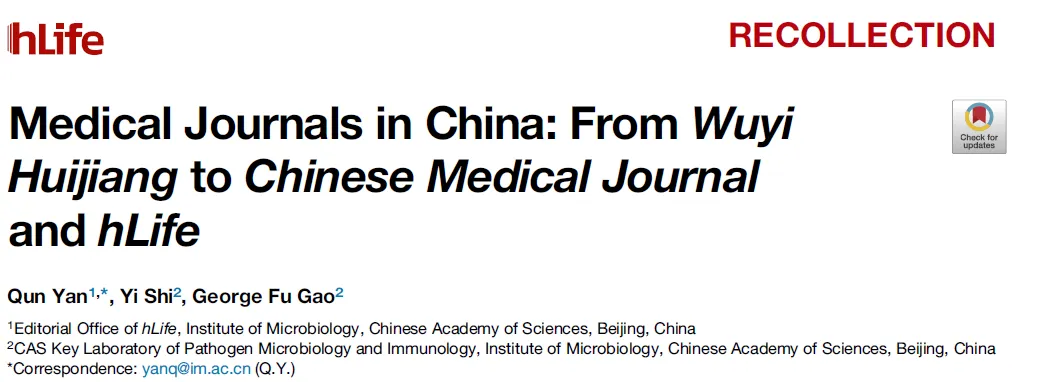
文章总结了中国医学期刊经历了萌芽期、动荡期、快速发展期和创新发展期四个阶段,并介绍健康科学领域的高起点英文新刊hLife。
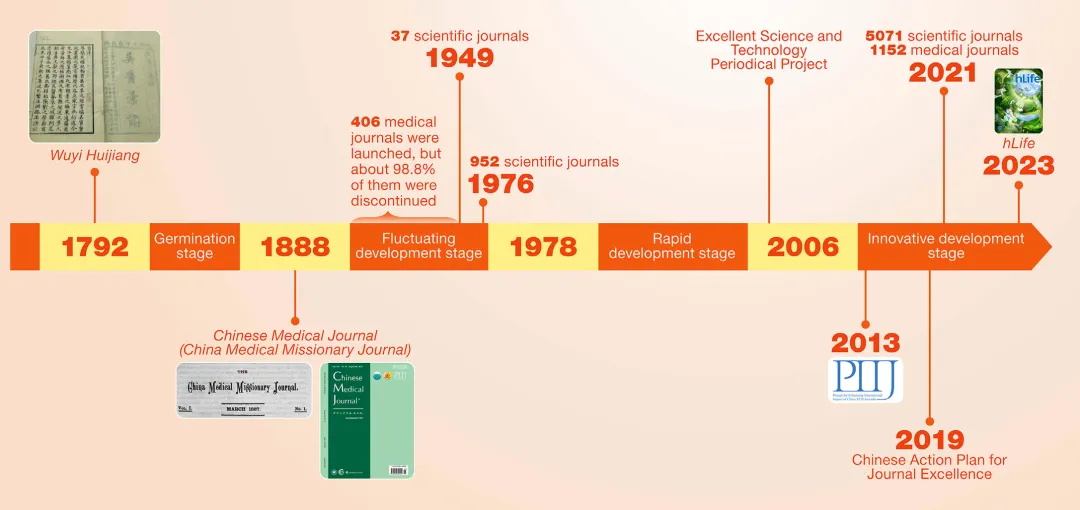
引用:
Yan Q, Shi Y, Gao GF. Medical Journals in China: From Wuyi Huijiang to Chinese Medical Journal and hLife. hLife 2024;2:1–3. doi:https://doi.org/10.1016/j.hlife.2023.08.001

扫码阅读原文
2. Commentary: Is the time right for systematically serotyping SARS-related coronaviruses?
通讯作者:王林发
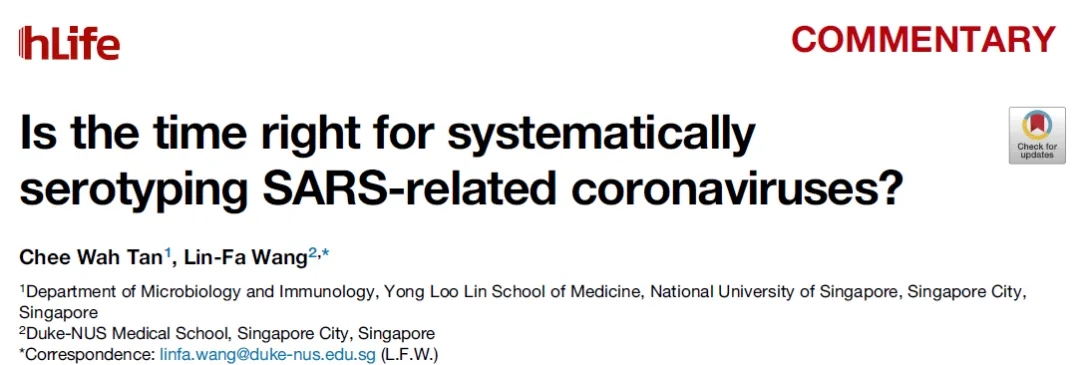
引用:
Tan CW, Wang LF. Is the time right for systematically serotyping SARS-related coronaviruses? hLife 2024;2:4-5. doi:https://doi.org/10.1016/j.hlife.2023.12.007

扫码阅读原文
3. Review:Advances in the pathogenic, genetic and immunological studies of leprosy
通讯作者: 刘红、张福仁

文章综述了麻风病因学、免疫遗传学研究现状,呈现了人类对麻风的认识由“无知”导致“谈麻色变”到发现麻风菌-开启化学治疗时代,进而发现“导致麻风危害发生”的内因-遗传风险因子,开启麻风精准防治新阶段。

引用:
Mi Z, Liu H, Zhang F. Advances in the pathogenic, genetic and immunological studies of leprosy. hLife 2024;2:6–17. doi: https://doi.org/10.1016/j.hlife.2023.10.003

扫码阅读原文
4. Artical: Crystal structures of RNA-dependent RNA polymerases from Jingmen tick virus and Alongshan virus
通讯作者:施一
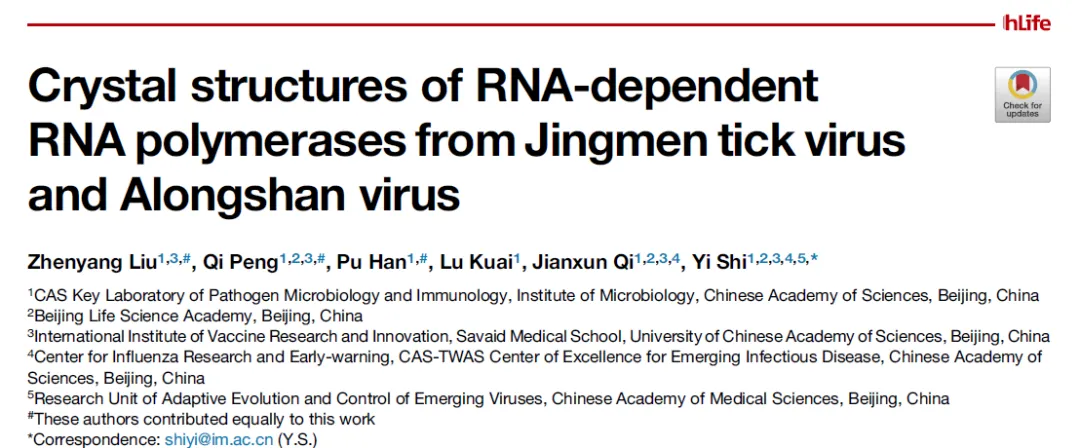
Highlights
•High-resolution structures of RNA dependent RNA polymerases (RdRps) from Jingmen tick virus (JMTV) and Alongshan virus (ALSV).
•The structures of JMTV and ALSV RdRps are similar to those from the typical Flavivirus genus.
•The JMTV and ALSV RdRps lack typical zinc-binding pockets of flaviviruses and harbor much shorter region B–C.
•A conserved 8-nucleotide element of stem loop A was essential to bind with RdRp and perform de novo replication activity.

引用:
Liu Z, Peng Q, Han P, et al. Crystal structures of RNA-dependent RNA polymerases from Jingmen tick virus and Alongshan virus. hLife 2024;2:18-31.
doi:https://doi.org/10.1016/j.hlife.2023.10.006

扫码阅读原文
5. Article: Assessing risk of Bombali virus spillover to humans by mutagenesis analysis of viral glycoprotein
通讯作者:钟劲
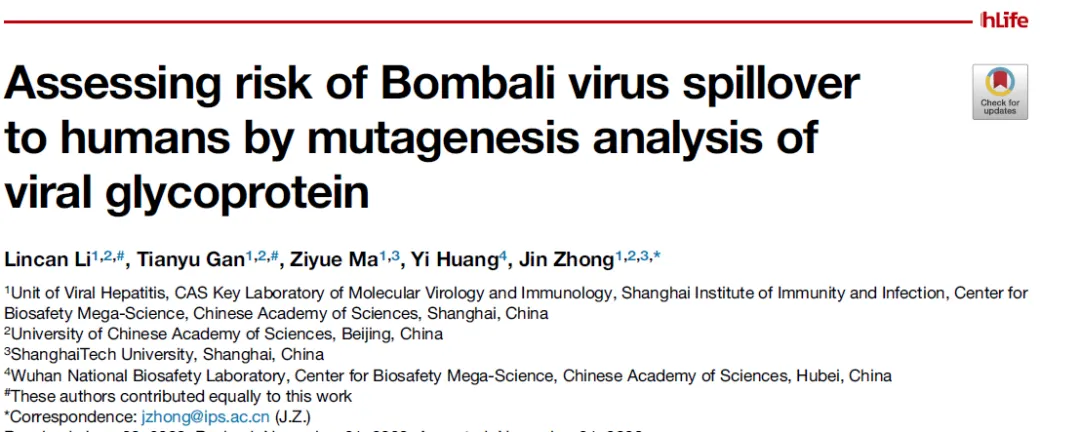
Highlights
•Wild-type Bombali virus (BMOV) glycoproteins (GPs) do not efficiently mediate viral entry into human cells.
•Mutations in the receptor binding domain (RBD) of BOMV GPs improve the viral entry.
•Mutations in the RBD of BOMV GPs enhance the GP's binding to human NPC1.
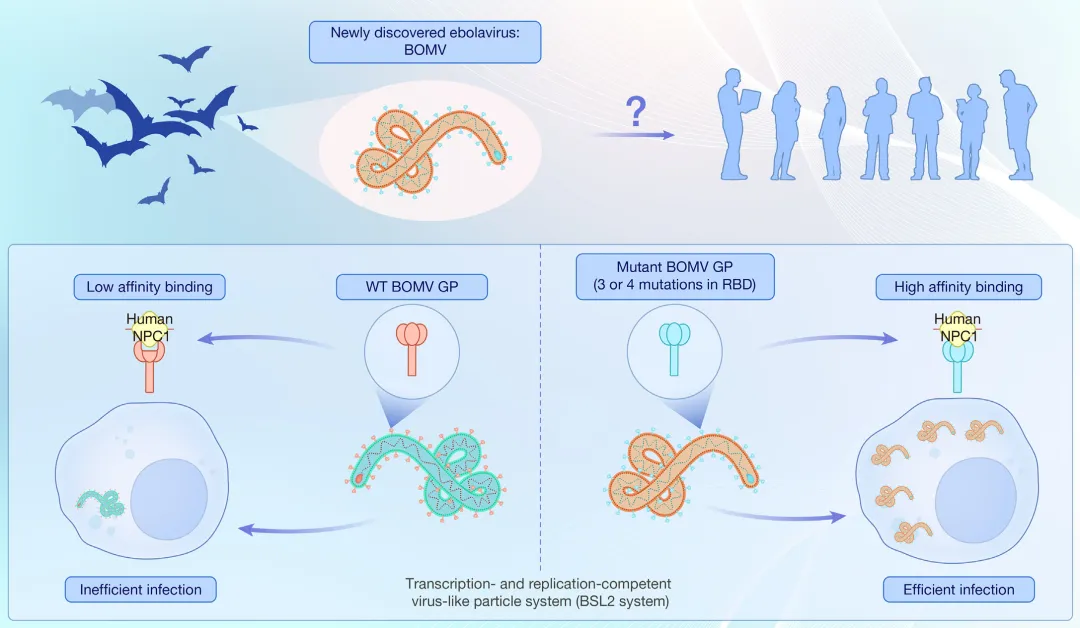
引用:
Li L, Gan T, Ma Z, et al. Assessing risk of Bombali virus spillover to humans by mutagenesis analysis of viral glycoprotein. hLife 2024;2:32-42. doi:https://doi.org/10.1016/j.hlife.2023.11.003

扫码阅读原文
6. Letter: Efficient inhibition of SARS-CoV-2 emerging EG.5, EG.5.1 and BA.2.86 variants by fusion inhibitor HY3000 peptide
通讯作者:王奇慧
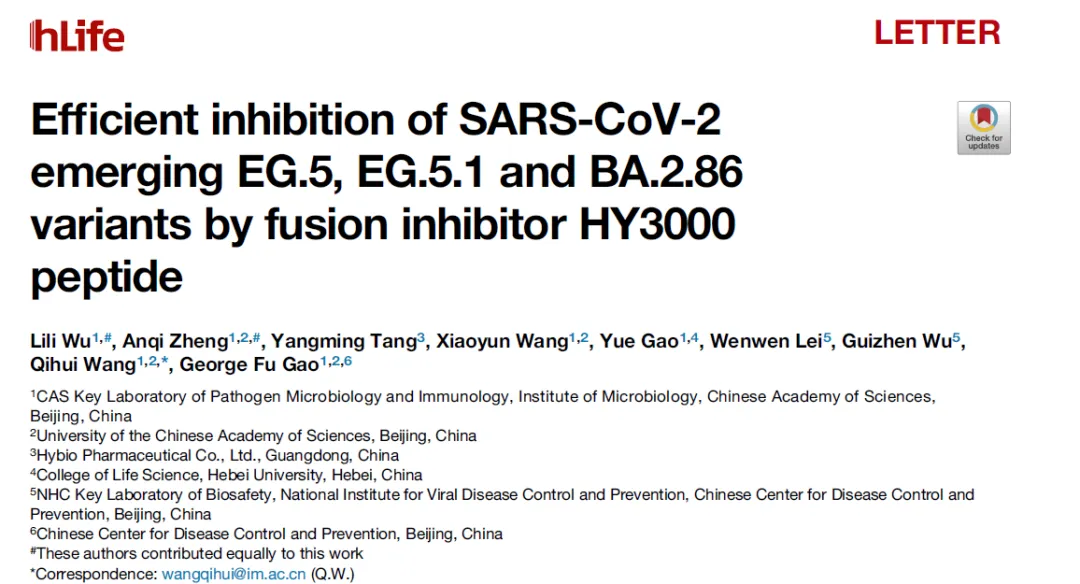
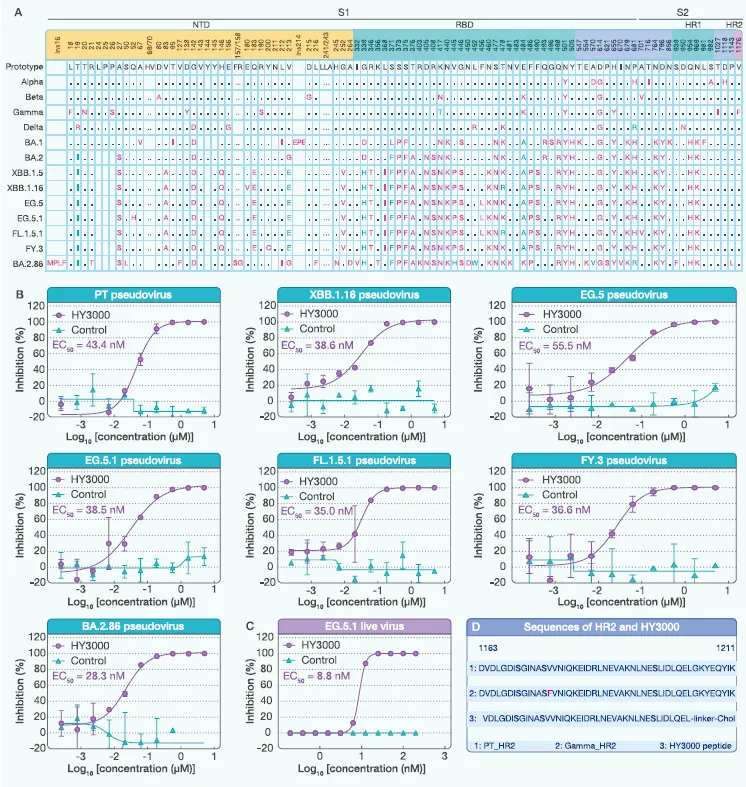
引用:
Wu L, Zheng A, Tang Y, et al. Efficient inhibition of SARS-CoV-2 emerging EG.5, EG.5.1 and BA.2.86 variants by fusion inhibitor HY3000 peptide. hLife 2024;2:43–46. doi:https://doi.org/10.1016/j.hlife.2023.10.002

扫码阅读原文
期刊简介
hLife是中国科学院微生物研究所主办,中国生物工程学会,上海市免疫治疗创新研究院,西湖大学医学院和广州霍夫曼免疫研究所联合支持,与国际出版商爱思唯尔合作的的健康科学领域综合性英文期刊。
hLife聚焦健康科学领域的前沿进展,旨在促进基础研究与临床应用的融合发展。期刊发表与医学相关各研究领域最新成果,学科领域包括(但不限于)病原生物学、流行病学、生理学、免疫学、结构生物学、疾病监测、肿瘤、药物、疫苗和健康政策等。
2022年成功入选“中国科技期刊卓越行动计划高起点新刊”。
投稿网址:https://www.editorialmanager.com/hlife
hLife官方网址:https://www.sciencedirect.com/journal/hlife
https://blog.sciencenet.cn/blog-3552961-1440608.html
上一篇:[转载]hLife | Call for Papers:Fungi and Human Health
下一篇:[转载]hLife 2024年第二期正式出版